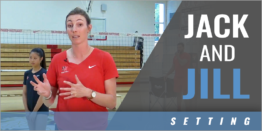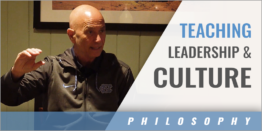|
By: Assistant Coaches Committee Originally Published in: Coaching Volleyball Magazine
You plan practice, training routines and matches, but do you plan your time-outs? In our last article, we discussed strategies on timeouts and how to use that time wisely. While there is no right or wrong answer, here are some ideas to consider from the assistant coaches on our committee:
Stephen Florio - Women's Head Volleyball Coach at Purdue University Fort Wayne: Our active players sit on the bench. The coaching staff kneels in front of them with our charts/diagrams visible. I take defensive time-outs and our Head Coach takes offensive time-outs, while the reserve players stand around us. A few years ago, we were struggling with responding out of time-outs. So, we devised a game called "Game-Breaker" that emphasized focusing during time-outs, executing after time-outs, and retaining the instructions as play continued.
Game-Breaker
Mike Gawlik - Michigan State: We have the entire team huddle around the starters, who are sitting. This arrangement helps block out the noise of the crowd, which can be overwhelming on the road. Plus, it cuts down on distractions. I've had the thought of using time-outs during practice, rather than water breaks, to get the players used to receiving information while getting water in 60 or 75 seconds. I've always thought that during practice "our bodies take breaks, but our minds never do." This strategy is a way of allowing athletes to concentrate on what we need to do next. Plus, it gives them confidence that they can execute coming out of a time-out, which can be a stressful time during the match.
Marie Zidek - DePaul University: We have our court players sit while the bench players stand behind to make sure all hear the message from the head coach. In practice, we use time-outs often to train game-like situations. This teaches them to problem solve as they would have to in a game on the court. If we are doing 6 v 6 competitive drills, we allow both sides to have a pre-determined number of time-outs directed by coaches.
Jay Hosack - Men's Head Volleyball Coach - George Mason University. Previously Assistant Men's Volleyball Coach at Penn State University: We are fans of letting the moment dictate how we deliver our messages. If the team as a whole is faltering, our head coach likes to talk to everyone at once in a huddle. If there are only a couple players who need some adjustments made, he lets everyone else prepare themselves for the next battle on their own.
Eric Hammond - University of Maryland Eastern Shore: We take a standing time-out with the entire team huddled around in a circle. When given longer time- outs, our coaching staff talks amongst ourselves for the first several seconds while the captains talk to the team.
|












